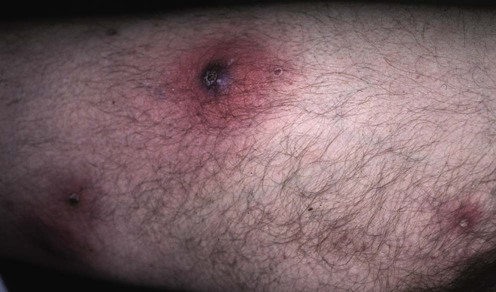Furunculosis

Management strategy
 Severe or extensive disease (e.g., involving multiple sites of infection)
Severe or extensive disease (e.g., involving multiple sites of infection)
 Rapid progression in presence of associated cellulitis
Rapid progression in presence of associated cellulitis
 Signs and symptoms of systemic illness
Signs and symptoms of systemic illness
 Associated comorbidities/immunosuppression (diabetes mellitus, HIV/AIDS, neoplasm)
Associated comorbidities/immunosuppression (diabetes mellitus, HIV/AIDS, neoplasm)
 Abscess in area difficult to drain completely (e.g., face, hand, and genitalia)
Abscess in area difficult to drain completely (e.g., face, hand, and genitalia)







